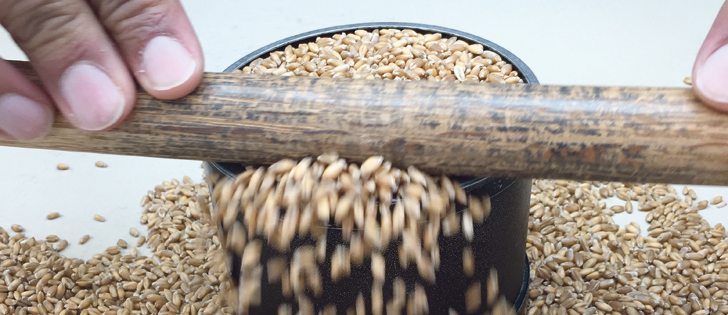The Alberta Wheat Commission wants Canada to modernize its grain grading system and adopt grading procedures that more closely align with the demands of international wheat markets.
In a Nov. 17 news release, the AWC said the Canadian wheat grading system needs to be reformed to “improve long-term profitability for farmers.”
The AWC is calling on the Canadian Grain Commission to establish a market-based system that puts more emphasis on universally measured grain specifications and less on subjective visual assessments.
Such a system would enhance the competiveness of western Canadian wheat growers and ensure that they receive fair market value for their grain, the AWC said.
Read Also

Farming Smarter receives financial boost from Alberta government for potato research
Farming Smarter near Lethbridge got a boost to its research equipment, thanks to the Alberta government’s increase in funding for research associations.
“We have observed an evolution in the way wheat is marketed to Canada’s customers,” said AWC chair Kevin Auch.
“International buyers aren’t looking purely at CGC grades —they’re looking at universal quality specs. Modernizing our grading system is a necessary move to ensure Alberta’s farmers receive the maximum value for the quality of wheat they produce.”
Canadian farmers do not sell their grain directly to international buyers, which means they rely on the systems in place to ensure it is meeting the needs of domestic and foreign buyers.
To that end, the Alberta commission is recommending a revised system that uses accurate testing methods to identify potential downgrading factors, such as falling number tests for sprout damage and deoxynivalenol (DON) tests to assess the market impact of fusarium graminearum infection.
The AWC said grain companies are already using falling number tests at some delivery points.
In addition, visual assessments of fusarium damaged kernels don’t always provide an accurate measure of DON and mycotoxin levels.
“This crop year has resulted in variable quality for farmers in Alberta and across the Prairies,” said Auch.
“We want to ensure that our grading system is not severely downgrading wheat that is considered good quality milling wheat in international markets.”
Auch said it’s difficult to say how the current grading system is affecting producers’ bottom lines.
However, he said any system that replaces subjective visual tests with objective analytical ones would give producers a better idea of what their crops are actually worth.
“I don’t know if I’d go so far as to say that the current grading system should be replaced, because our grading system has served us well over the years,” he said.
“But there are certain things that they can tweak … like fusarium assessments based on the DON test.
“That’s one of the ways now that countries are buying their wheat. They’re looking at those DON levels … and they’re already buying on those specs and yet we’re using visual fusarium damaged kernels assessments on our grading system, rather than testing for DON.”
Over time, the grading system will depend more on science-based tools and less on subjective visual assessments, he added.
However, the transition will take time and will require a thorough consultation with the industry to assess costs, implementation issues and potential impacts.
“The grain commission has been working towards ensuring that the grain grading system be based on science,” Gosselin said.
“We have specifically identified the move from subjective visual factors to objective analytical factors as a direction in which we want to take the grading system.”
Gosselin said the eastern and western standards committees have already been advised of the CGC’s decision to move to a grading system based on analytical data as opposed to visual assessments.
The grain commission will be “establishing a team to advance this effort and it will engage heavily with affected producer groups,” he added.
AWC expressed support for changes to mildew guides that were recently announced by the grain commission, but it also called on the commission to evaluate and align Canada’s mildew guides with U.S. standards.
The AWC raised its concerns over the existing grading system in a Nov. 14 letter addressed to CGC’s acting chief commissioner, Jim Smolik.
A copy of that letter can be viewed at albertawheat.com/our-programs/markets/major-market-initiatives/re-market-alignment-of-canadian-wheat-grading-guides.


















